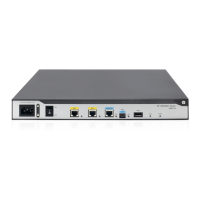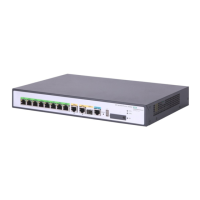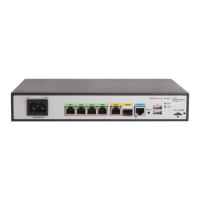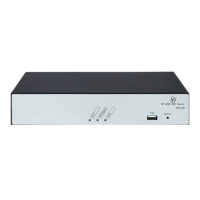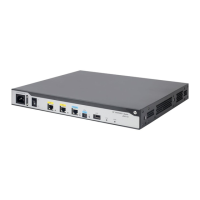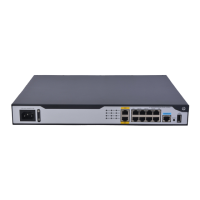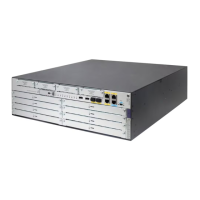9. Configure the expected
bandwidth for the
interface.
bandwidth bandwidth-value
By default, the expected bandwidth (in
kbps) is calculated with the following
formula: Interface baud rate/1000.
10. Configure an MTU
value for the interface.
mtu size
By default, the MTU value for the interface
is 1500 bytes.
11. (Optional.) Restore the
default of the interface.
default N/A
12. Bring up the interface.
undo shutdown By default, the interface is up.
Configuring an ADSL interface
Overview
ADSL is an asymmetric transmission technology that implements high-speed data transmission over
twisted-pair copper wire. It uses unused high frequency ranges in the regular telephone line with a
different modulation method. With standard ADSL, the band from 26 kHz to 138 kHz is used for
upstream communication, and 138 kHz to 1.104 MHz is used for downstream communication. The
upstream rate is up to 640 kbps, and the downstream rate is up to 8 Mbps.
Some ADSL technologies, however, can provide faster transmission rates by using the following methods:
• Improving modulation rate, coding gain, and initialization state machine.
• Reducing frame head overhead.
• Using enhanced signal processing methods.
ADSL2 can provide the upstream transmission rate up to 1024 kbps and downstream transmission rate
up to 12 Mbps. By expanding the downstream band from 1.104 MHz to 2.208 MHz, ADSL2+ can
provide an upstream transmission rate up to 2048 kbps and a downstream rate up to 24 Mbps.
The transmission rate of ADSL is susceptible to the transmission distance and line quality. An increased
transmission distance means decreased line quality and transmission rate. A decreased transmission
distance means increased line quality and transmission rate. When setting up a link, ADSL can
automatically tune the rate by considering actual line conditions such as distance and noise.
Two types of ADSL modules/cards are available:
• ADSL over POTS—ADSL over the telephone line. Both telephone calls and ADSL access are
implemented on the telephone line.
• ADSL over ISDN—ADSL over the ISDN line. Both ISDN access and ADSL access are implemented
on the ISDN line. ADSL signals are transmitted at high frequency ranges, and ISDN signals are
transmitted at low frequency ranges.
For a typical network topology for routers with ADSL interfaces, see
Figure 6. Both telephone calls and
ADSL access are implemented on the telephone line.
59
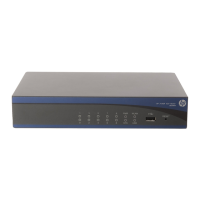
